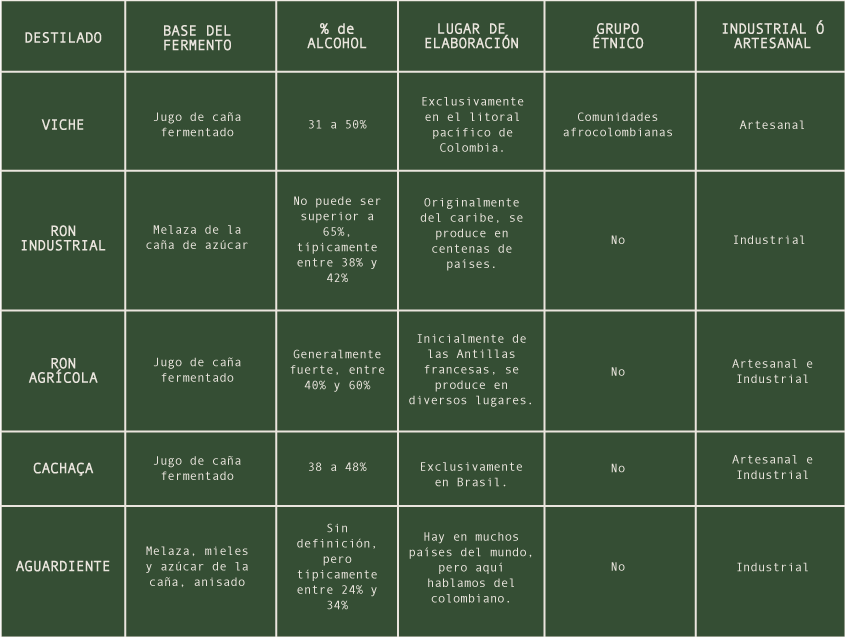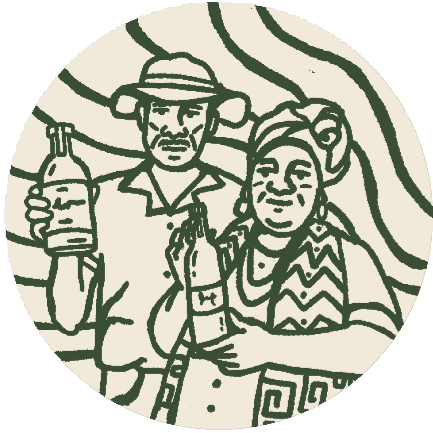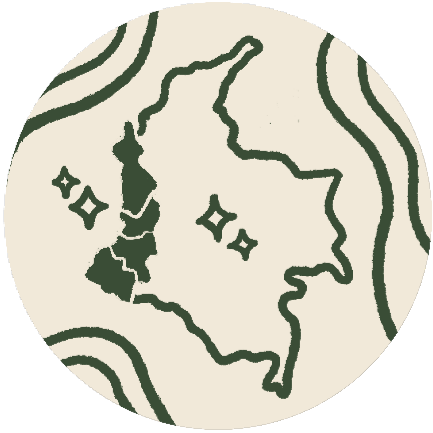
Alcoholic beverages have been present throughout human history, and their production and consumption are cultural expressions of a large number of populations around the world. The first spirits likely arose by chance, as is the case with the precursor to mead, which appeared when someone realized that honey had fermented and turned into alcohol naturally. Other beverages such as beer, wine, cider, or sake, also very ancient, soon appeared once humans understood that through a natural process called fermentation , wich converts sugars into alcohol, there was a world to explore.
Fermentation came first, but then alchemists discovered that higher and purer levels of alcohol could be obtained through a process called distillation (from the Latinde-stillaremeaning "to drip"), which involves taking a fermented liquid and subjecting it to heating in a closed vessel until it reaches the boiling point, causing the alcohol to evaporate.
The vapors are concentrated at the top of the vessel, which can be a professional still or a distillation pot, and they are condensed as they exit through a thin tube, yielding the precious alcohol droplets that form various spirits. Spirits because early distillers observed this phenomenon and believed it to be magical, thinking that spirits had managed to transform agricultural products' vapor into alcohol.
Would you like to distill grape wine? You'll get brandy. Interested in distilling barley? That's how whisky is made. How about distilling rye? That's the birth of gin. Prefer distilling potatoes? Then you've got vodka. And what about distilling a cactus-like agave? There's your tequila or mezcal. Every fermented beverage can be distilled, meaning any agricultural product whose sugars have turned into alcohol can undergo the distillation process. Or to put it another way, without fermentation, there is no distillation.
"Without fermentation,
there is no distillation"
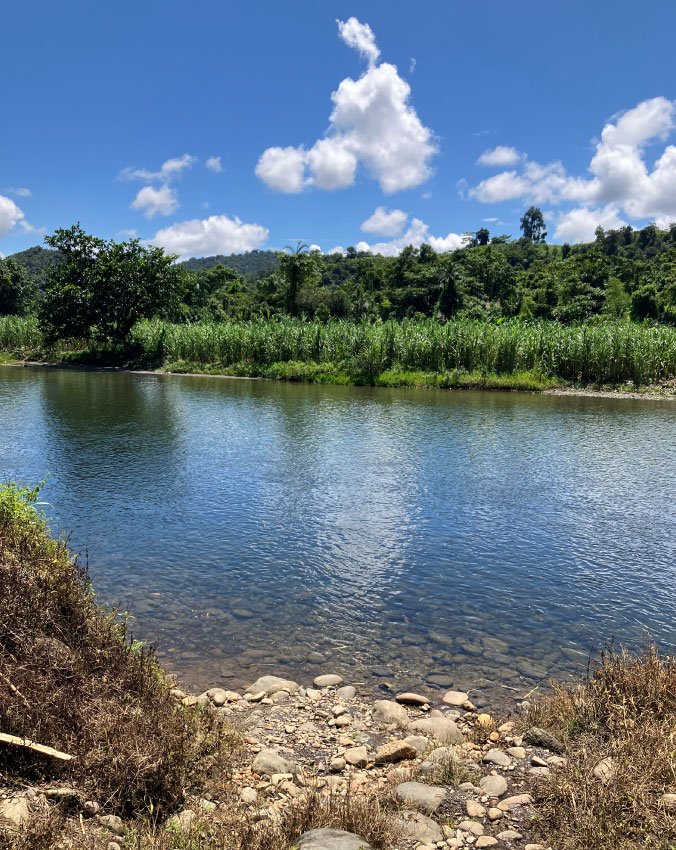
It's clear that producing the best and most famous spirits in the world like whiskey, gin, vodka, mezcal, or pisco, to name a few, is not as simple as fermenting any fruit or cereal and passing it through a still to magically obtain a quality distillate. It's essential to have good production practices and, of course, the age-old knowledge of Masters and Mistresses.
One of the most important techniques in the distillation process is knowing when the vapor that condenses and turns into alcohol is at its optimal point for consumption. The distilled liquid is divided into three parts, each with its own properties and characteristics:
There are many techniques to determine when to make the correct cut between the heads, hearts, and tails, and nowadays there are industrial equipment that assist in the process. However, through sight, smell, and taste, Master distillers know the ideal point to do it.
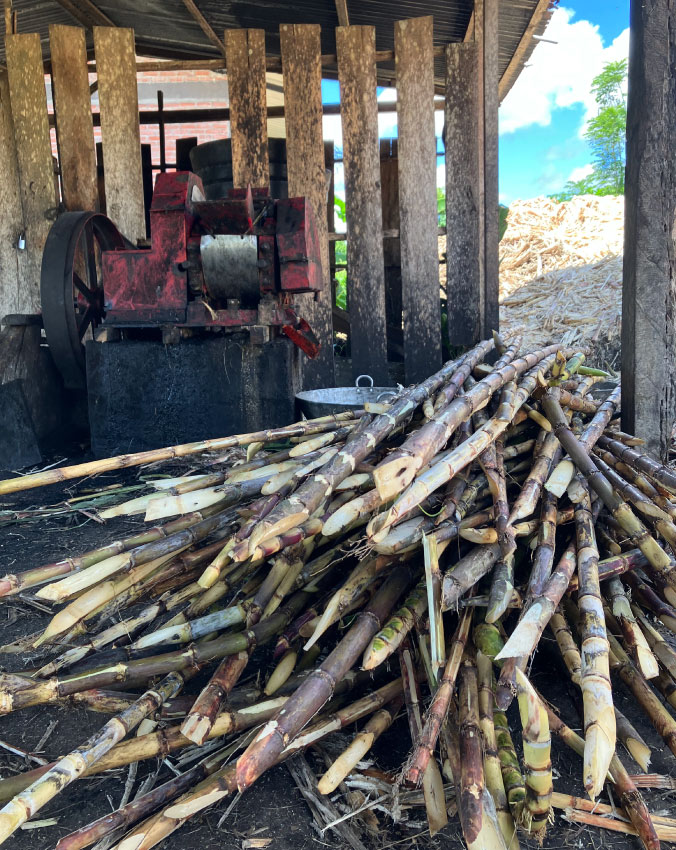

Oh, the sugarcane! This large and succulent grass originated in New Guinea, passed through Africa and Asia, but found its favorite home in Latin America. It first arrived in the Caribbean, in Santo Domingo, but it was in 1510 in Colombian territory where it touched South American soil for the first time. Santa María La Antigua del Darién, currently Santuario, municipality of Unguía, department of Chocó,1was the landing place. In other words, the first sugarcane in South America is from Chocó!
"The first sugarcane in South America is from Chocó!"
From this plant, a series of distilled spirits are made such as aguardiente, cachaça2, rum, clairin3chirrinche4 , and of course, viche!5 However, although they all share sugarcane as a common denominator, each one is unique in its essence.
Viche is special, a high-quality beverage produced through traditional practices, crafted by Afro-Colombian communities in the Colombian Pacific region. If it doesn't meet these two conditions (territory and ethnic group), it cannot be labeled as viche. That's why a new category called Ethno-Artisanal (AE) will be created for issuing sanitary registration.
Category Artisanal Ethnic

PRODUCTION OF VICHE STEP BY STEP
1. CULTIVATION
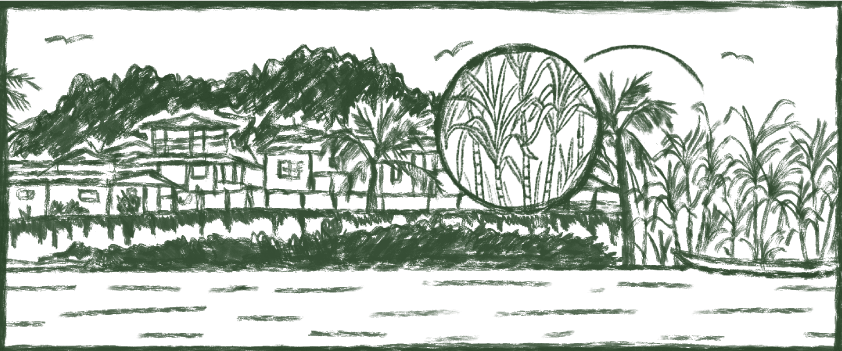
The sugar cane for viche is native, specific to the territory, cultivated without chemicals in small plots of land, and often randomly mixed with other crops. The most well-known varieties include yellow, purple, black, white, Cuban, and export, among others, and they will never be monocultures.
The buds, which are the inner part of the cane - tighter, whiter, and tenderer - are planted, and gradually the stalks grow. When it reaches the "jecha" stage (the point at which the viche producer considers it to be at its juiciest), it is harvested with a machete.
The land where the crops are located belongs to a family with a viche-making tradition, and it is respected and cared for. These are the same lands where sugarcane has been cultivated for decades and are considered special because they are within the jungle in one of the most biodiverse places on the planet, next to the river or the sea. The viche resulting from this sugarcane acquires all the organoleptic characteristics of the territory.
2. MILLING
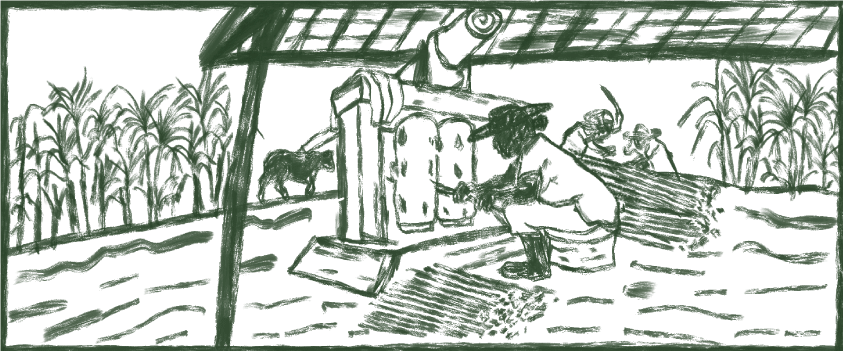
After cutting the sugarcane, it needs to be transported to a mill and its juice extracted within the next 24 hours to prevent the formation of microorganisms at the cut point, which could compromise the quality of the distillate.
The sugarcane was traditionally crushed in traditional mills, called "mata-cuatro," where human force (of at least four people) or animal traction was used. Nowadays, manual mills are rare, and most communities have mechanical mills, whether private or communal.
BOILING
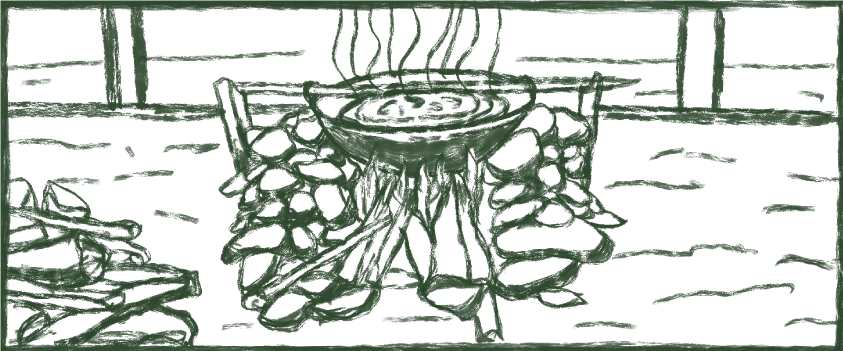
After milling and before fermenting the juice, it is necessary to ensure that there are no impurities (pieces of cane, leaves, or any external particles). This is done through techniques of cooking the sugarcane juice, also used to ensure the proper sugar level before fermenting. Viche communities 'cook the guarapo' with firewood in large outdoor cauldrons. This cooking and the point to which the guarapo should reach is a secret of each Master distiller.
There are a few producers who do not cook the sugarcane juice; instead, they separate solid and liquid residues and filter them through decantation. This can be considered a more modern technique for separating solid and liquid residues.

4. FERMENTATION
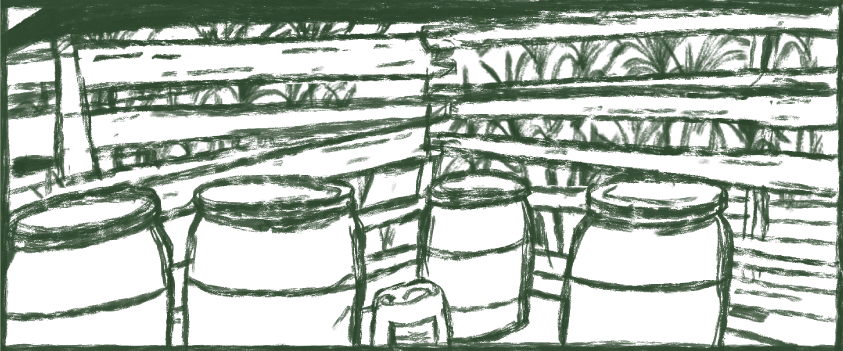
Viche is a distilled spirit made from fermented sugarcane juice. Fermentation is the stage where natural microorganisms begin to act, feeding on the sugar and producing alcohol as a byproduct.
Once again, there are various techniques and timings to reach the ideal fermentation point. Although in the past this must or must was stored in wooden and/or clay containers, nowadays polypropylene tanks perfectly suitable for this task are used. Well stored and at the ideal temperature, the fermentation process takes place, which can last between five days to two months, with one to two weeks being the most common durations.
During this process, the master vichera periodically checks and tastes the must to determine the ideal moment to cook it in the distillation pot. Modern instruments exist to assist with this measurement, but in the Colombian Pacific region, it is done based on experience and knowledge orally inherited from previous generations.
5. DISTILLATION
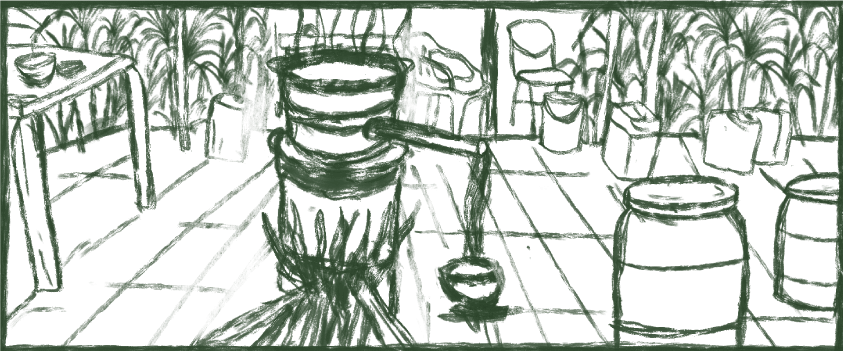
It's time to extract the spirit from the sugarcane, in other words, to turn the fermenting "guarapo," which should have an alcohol content between 10 and 15 degrees, into pure alcohol. The fermented mash is cooked in a distillation pot with firewood in the open air until it reaches its boiling point. The evaporated liquid, pure alcohol, condenses and exits through a "flute" or tube made of bamboo or other types of wood, which has a little cotton at the tip to ensure a steady drip and to capture any additional impurities that may appear.
It's an extremely delicate process that demands the full attention of the Master vichera who must monitor all the variables that will affect the final result to obtain a high-quality viche.
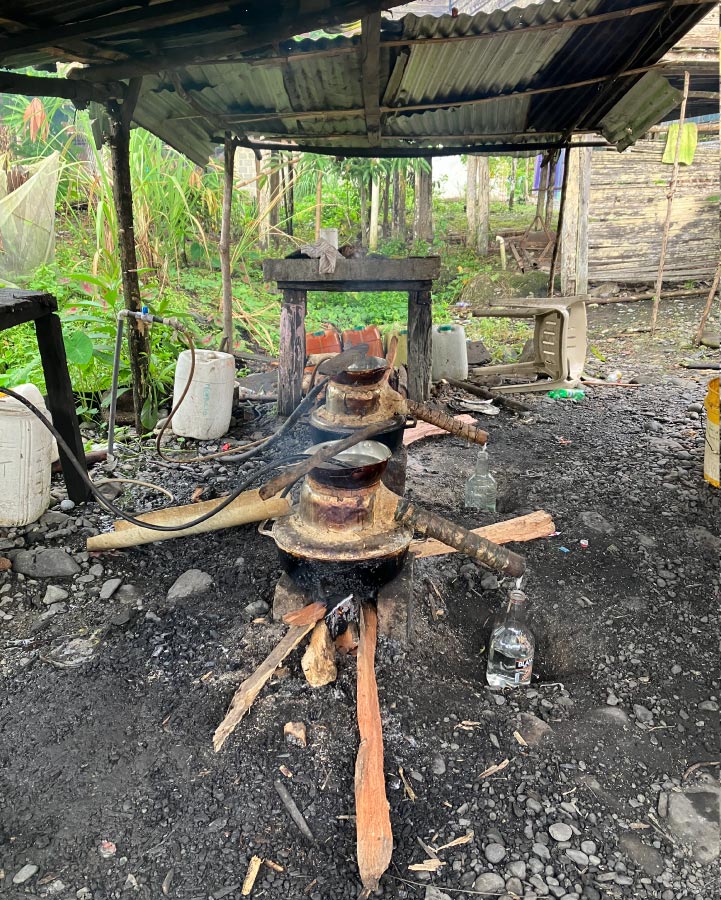
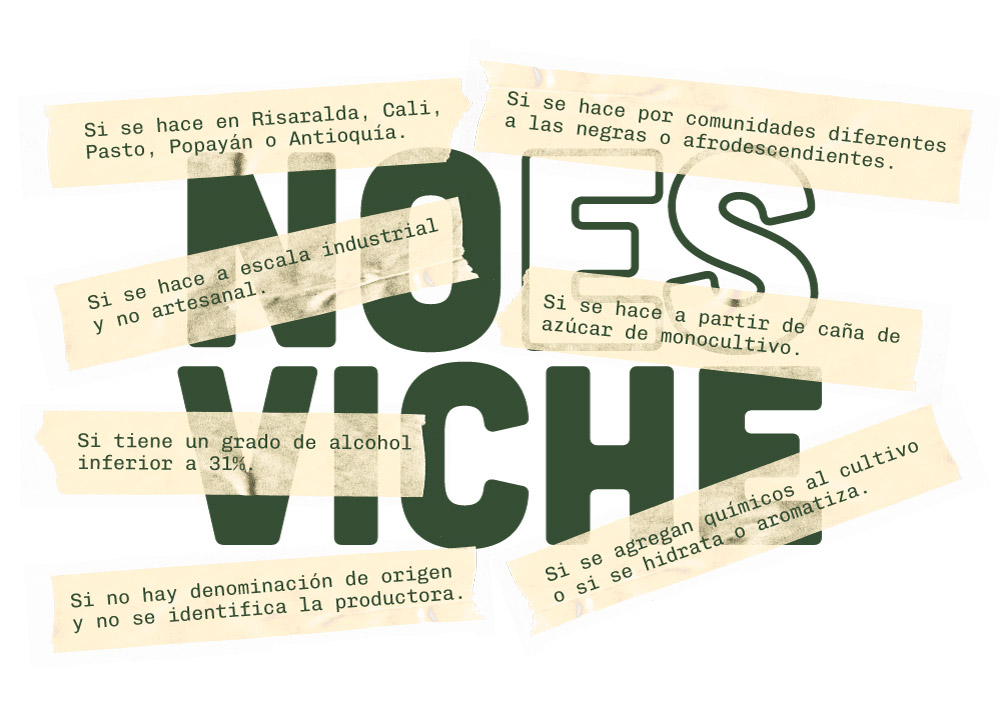

Viche is not just another distilled spirit; it is a product of sugarcane from dense and humid jungle, from river and sea, from biodiversity at its fullest. It embodies centuries of tradition and resistance belonging to a community with a unique history that has imprinted its worldview and cultural legacy in this beverage.
There is no viche like another, and there is an infinity of flavors and aromas. It is a complex beverage appreciated by those who know about spirits for its artisanal technique and natural context. It is a treasure of limited, artisanal production, and besides being spirited, it is spiritual.
COMPARATIVE TABLE OF SUGAR CANE DISTILLATES
